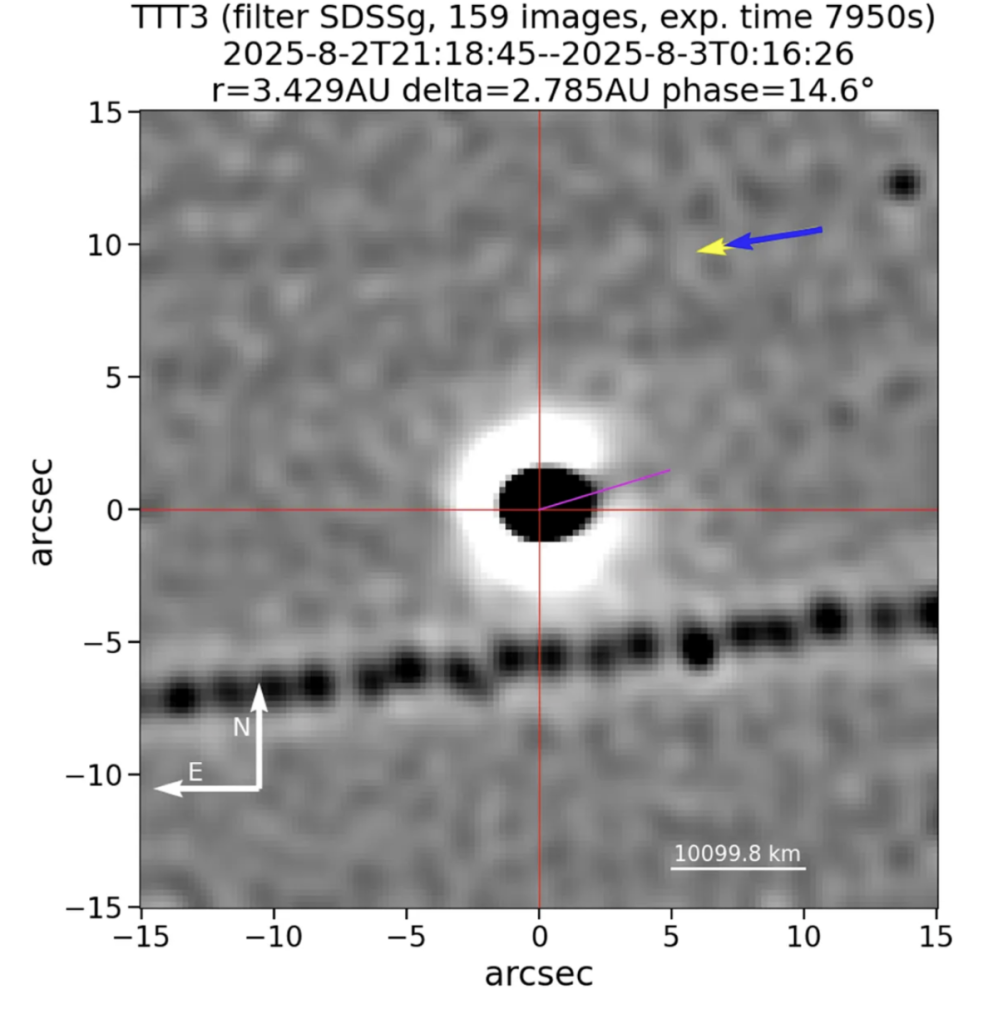Astronomers have captured striking new images of the interstellar object 3I/ATLAS shooting a massive jet of gas and dust toward the sun.
Others are reading now
The behavior, though dramatic, is perfectly normal for comets as they heat up while approaching a star, experts say.
An interstellar visitor
Discovered in late June and confirmed by NASA in early July, 3I/ATLAS is only the third known interstellar object to enter our solar system.
Originating from a distant, unidentified star system, the comet is estimated to be between 5 and 11 kilometers wide, making it the largest and possibly the oldest interstellar visitor ever detected.
Some researchers have speculated that such objects could be artificial, but astronomers largely agree that 3I/ATLAS is a natural comet behaving as expected.
The latest images, taken on August 2 by the Two-meter Twin Telescope at Spain’s Teide Observatory, reinforce that conclusion.
Also read
A closer look at the jet
The composite image, combining 159 telescope exposures, shows a dark cometary core surrounded by a white haze.
A fan-shaped break in that haze marks the site of a powerful jet of gas and dust, directed toward the sun.
“This is the usual,” said Miquel Serra-Ricart, chief science officer at Teide Observatory’s Light Bridges research center. “Jets are pointing to [the] sunward direction and [the] comet’s tail in the anti-solar direction.”
As comets warm unevenly during their solar approach, volatile gases beneath their surfaces can vaporize and burst outward through weak points, creating geyser-like jets that spray material thousands of kilometers into space.
Familiar cosmic behavior
According to Serra-Ricart, the jet from 3I/ATLAS could stretch roughly 10,000 kilometers (about 6,200 miles).
Also read
It’s likely composed mostly of dust and carbon dioxide, similar to what the James Webb Space Telescope observed around the comet in August.
The fan shape visible in the new photos comes from the comet’s rotation, a pattern also seen in Comet NEOWISE during its 2020 close pass of the sun.
Radiation from solar wind later sweeps some of that ejected material into the comet’s tail, allowing both a sunward jet and an opposite-facing tail to exist simultaneously.
Approaching perihelion
3I/ATLAS passed Mars on October 3 and will reach its closest point to the sun, known as perihelion, on October 29.
The comet is currently hidden behind the sun from Earth’s perspective and will become visible again in mid-November.
Also read
When it reappears, astronomers hope to determine how the comet’s close encounter with the sun has altered its structure, jet activity, and tail length.
For now, 3I/ATLAS remains a rare and captivating visitor, a frozen relic from another star system briefly illuminated by our own.



